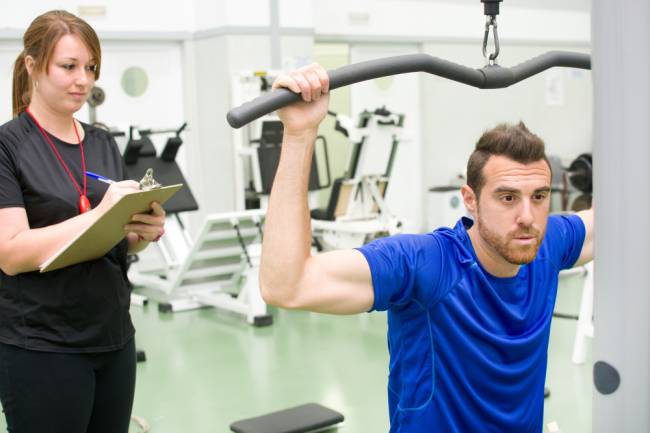Sam Greenwood, co-founder of personal health and fitness programme platform, Amaven, tells DAD.info why we should all be regularly putting ourselves through our paces with a Fitness MOT…

The MOT. The annual test that flags up issues with your vehicle. This test may seem like a nuisance, but it’s crucial to identify problems and keep your motor running smoothly.
You get your vehicle checked every year, so why shouldn’t you treat your own engine – your body – in the same way? Car references aside, making sure that your body is ready to start training is necessary to get the most out of your exercise regime and prevent injury.
Certain health clubs are now offering Health MOTs as part of their membership, a test which measures BMI, blood pressure, resting heart rate, cholesterol and sugar levels. This may sound impressive, but it’s nothing that you couldn’t learn from a trip to your GP.
What gyms and health clubs should really be offering is Fitness MOTs, a multistage fitness test which assesses your current fitness level based on the core compounds of exercise, which include stability, posture, strength, stamina and mobility. Each one of these elements affects how your body performs on a daily basis, let alone during exercise, so it is important to follow a training plan that combats any areas of weakness.
Why everyone should have a Fitness MOT
If you’re a newbie to the gym, chances are you’ve had an induction session to make sure you are using the equipment correctly – nobody wants to be the star of the next ‘gym fails’ clip on YouTube – and you may have even had a free personal training session to discuss what you want to achieve or have purchased a generic online plan.
While inductions, training plans and PT sessions may deliver the promises of a great body within a few months, a generic approach to training such as this could cause you serious problems further down the line. True you may end up with a six pack, but you could be ignoring poor balance which causes you to over-extend your legs during squats, consequently giving you back pain. With offers like ‘get a six pack in 12 weeks’ and real life progress pictures dominating social media, it’s hard not to be allured in by the marketing, but you need to put your health above everything else and work on the long game.
Taking a fitness test before you jump straight into a training plan will highlight areas of your body that NEED to be improved, as opposed to areas that you WANT to improve. This will help you to avoid injury and build an even better body from the beginning.
Take a simple, at-home fitness test
A fitness provider should offer an in-depth fitness test, but if want to go it alone then you can always carry one out at home.
You can test how well you perform across the five areas through these simple tests. All you’ll need to do is give yourself a score of 1 to 5 for each exercise and see which areas you scored the lowest in. Some of these exercises may also require you to grab a friend and a stopwatch for accuracy.
Stability: The Balance Test
Stand on one leg unassisted and slowly raise the opposite arm above your head. Aim to hold for two minutes without wobbling or falling.
Strength: The Push-up Test
Do as many push-ups as you can in three minutes, resting if needed. If you can easily do 100 or more than your strength is good, anything below 50 indicates that you have poor strength.
Posture: The Wall Test
Stand with your back against a wall, your feet flat on the ground and heels about six inches away from the wall. Place your head against the wall as well, and tuck in your chin. Raise your arms out to shoulder height and bend your elbows. Point your fingers forward with your elbows straight out from your shoulders. Rotate your arms upward at the elbows, keeping them bent, and try to touch the back of your wrists to the wall.
If you find this difficult, or can’t make your wrists touch the wall, then this signals poor posture.
Mobility: The ‘Up and Go’ Test
You’ll need a friend to time how long it takes you to get up front a chair, walk three metres, turn around and sit back down on your chair. If you are able to do this is 14 seconds or less, it suggests that you have good mobility and are at less risk of injury and falling.
Stamina: The Squats Test
Get a stopwatch and perform as many bodyweight squats as you can in one minute. Anything below 50 indicates poor stamina.
The next step? Improve your fitness
After you’ve performed the test, you’ll have a better idea of the areas that you need to work on. Take this knowledge to your gym, or personal trainer, and use it to develop a comprehensive training plan that will work on these areas. You’ll see a significant improvement in your overall fitness and reduce the risk of injury in the future.
Sam Greenwood is the founder of Amaven, a platform that creates custom exercise programs for people based on their strengths and weaknesses, which are identified through a comprehensive fitness test.








